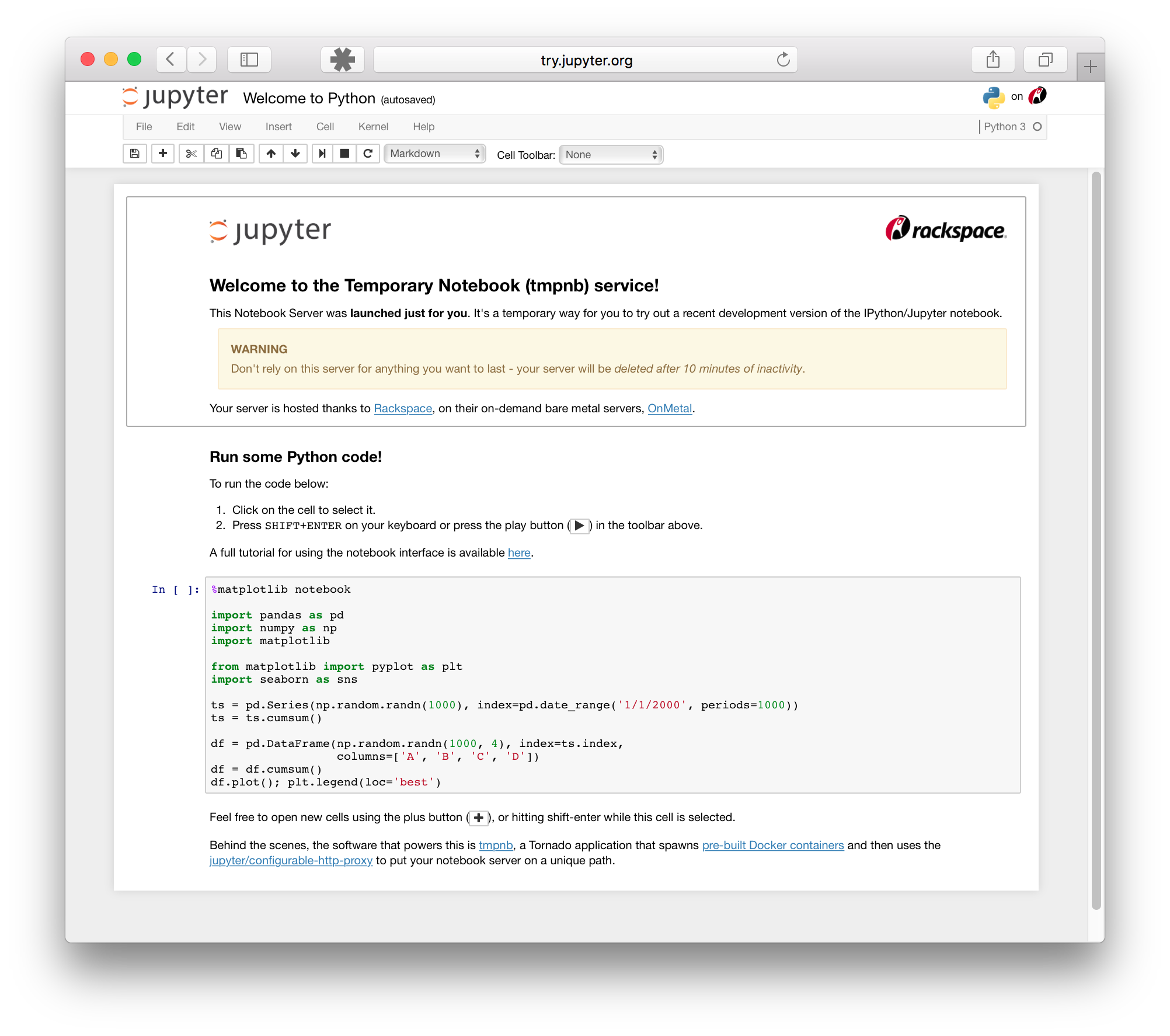Jupyter All In One
Jupyter All In One
Jupyter Architecture
https://jupyter.readthedocs.io/en/latest/projects/architecture/content-architecture.html

iPython
Jupyter Notebook Interface
https://ipython.org/index.html
Jupyter Notebook
https://jupyter.readthedocs.io/en/latest/install.html

Python REPL online

REPL & playground
https://mybinder.org/v2/gh/ipython/ipython-in-depth/master?filepath=binder/Index.ipynb
https://mybinder.org/v2/gh/jupyterlab/jupyterlab-demo/try.jupyter.org?urlpath=lab
Python enumerate()
enumerate() is a built-in function to iterate through a sequence and keep track of both the index and the number.
>>> list(range(11))
[0, 1, 2, 3, 4, 5, 6, 7, 8, 9, 10]
>>> list(enumerate([1, 2, 3]))
[(0, 1), (1, 2), (2, 3)]
>>> list(enumerate([1, 2, 3], start=10))
[(10, 1), (11, 2), (12, 3)]
list = [45, 22, 14, 65, 97, 72].
for i, num in enumerate(numbers):
if num % 3 == 0:
numbers[i] = "fizz"
if num % 5 == 0:
numbers[i] = "buzz"
if num % 5 == 0 and num % 3 == 0:
numbers[i] = "fizzbuzz"
for i, num in enumerate(numbers):
if num % 5 == 0 and num % 3 == 0:
numbers[i] = "fizzbuzz"
elif num % 3 == 0:
numbers[i] = "fizz"
elif num % 5 == 0:
numbers[i] = "buzz"
refs
https://realpython.com/lessons/python-coding-interview-tips-overview/
https://realpython.com/courses/python-range-function/
https://realpython.com/lessons/use-enumerate-keep-running-index/
©xgqfrms 2012-2020
www.cnblogs.com 发布文章使用:只允许注册用户才可以访问!
本文首发于博客园,作者:xgqfrms,原文链接:https://www.cnblogs.com/xgqfrms/p/13600101.html
未经授权禁止转载,违者必究!



【推荐】国内首个AI IDE,深度理解中文开发场景,立即下载体验Trae
【推荐】编程新体验,更懂你的AI,立即体验豆包MarsCode编程助手
【推荐】抖音旗下AI助手豆包,你的智能百科全书,全免费不限次数
【推荐】轻量又高性能的 SSH 工具 IShell:AI 加持,快人一步
· Linux系列:如何用heaptrack跟踪.NET程序的非托管内存泄露
· 开发者必知的日志记录最佳实践
· SQL Server 2025 AI相关能力初探
· Linux系列:如何用 C#调用 C方法造成内存泄露
· AI与.NET技术实操系列(二):开始使用ML.NET
· 被坑几百块钱后,我竟然真的恢复了删除的微信聊天记录!
· 【自荐】一款简洁、开源的在线白板工具 Drawnix
· 没有Manus邀请码?试试免邀请码的MGX或者开源的OpenManus吧
· 园子的第一款AI主题卫衣上架——"HELLO! HOW CAN I ASSIST YOU TODAY
· 无需6万激活码!GitHub神秘组织3小时极速复刻Manus,手把手教你使用OpenManus搭建本
2019-09-02 PWA & Service Worker
2016-09-02 web 存储方式汇总:Cookies,Session, Web SQL; Web Storage(LocalStorage ,SessionStorage),IndexedDB,Application Cache,Cache Storage
2016-09-02 jQuery 使用注意事项 与 小技巧(tips)
2016-09-02 CSS 定位 relative && absolute 问题?
2016-09-02 FireFox native cookie operation